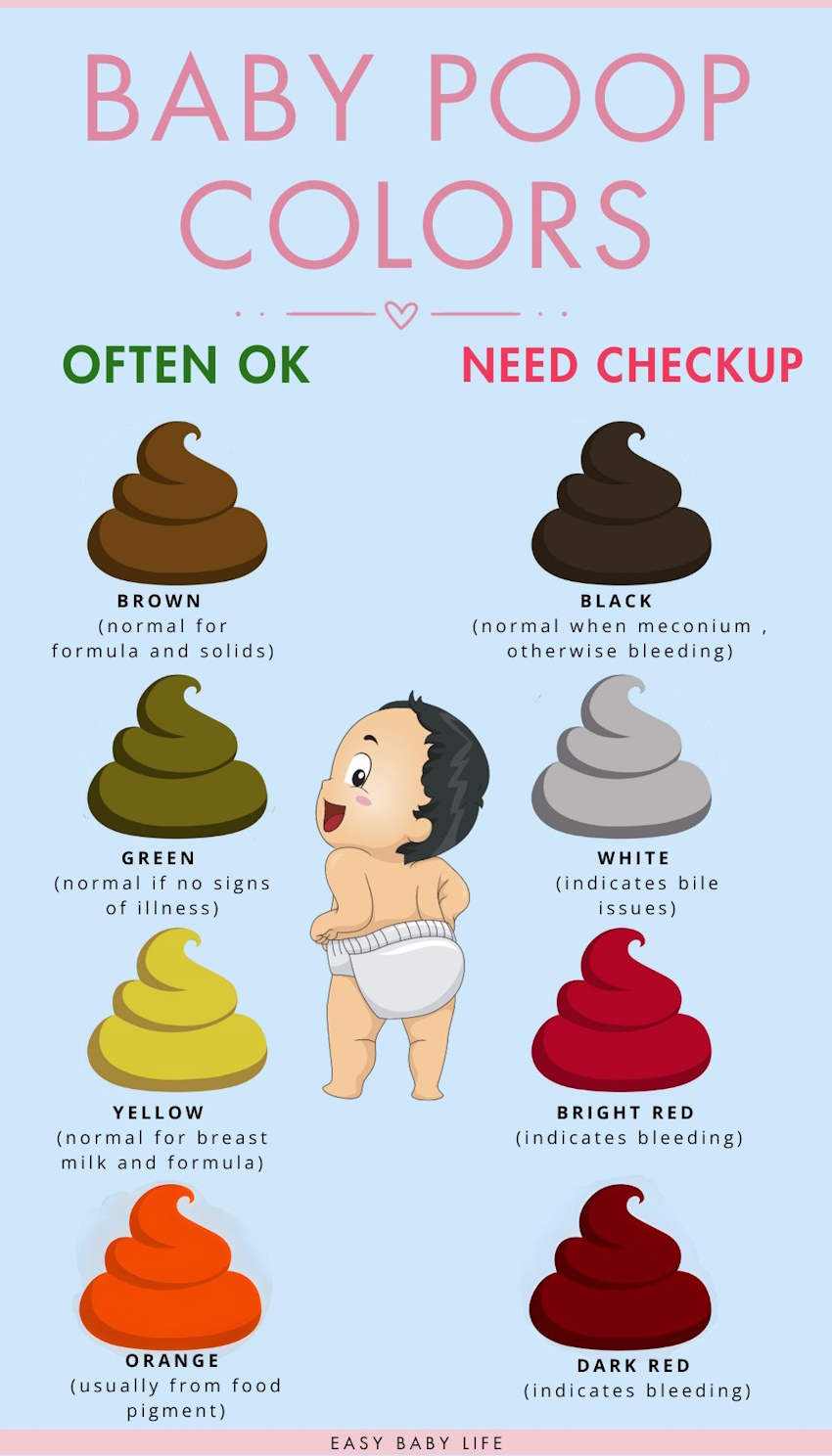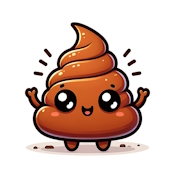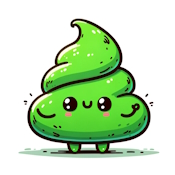
Welcome to the colourful world of child poop! It’s not nearly soiled diapers; it’s a window into your child’s well being.
From mustard yellow to inexperienced, brown, pink, black, white, and orange, every hue has its personal rationalization, as you’ll be able to see within the child stool colour chart beneath.

This text will stroll you thru the spectrum of poop colours in breastfed and formula-fed infants and in these beginning with stable meals. Be taught what’s regular, what may very well be a trigger for concern, and when to seek the advice of your pediatrician.
Yellow Child Poop
Let’s begin with the commonest colour for infants which have but to start out with stable meals – yellow. Yellow child poop is regular and anticipated. If the colour may be very pale yellow – virtually white – it may point out an issue, and it’s best to examine white and clay-colored poop beneath. So long as that child primarily eats breast milk or system, yellow child poop is predicted. The precise colour and consistency can differ although.
Breastfed Infants
Yellow, mushy bowel actions are anticipated for breastfed infants. The yellow comes because the child begins digesting breast milk, transitioning from the preliminary meconium. These bowel movements are usually seedy and free, resembling gentle mustard.
System-fed Infants
In formula-fed infants, the bowel actions may be yellow, orange, tan, inexperienced, or grey. These stools could also be a liquid texture, or barely firmer than these of breastfed infants however nonetheless with a smooth consistency. Consider shaped stools as like a Play-Doh texture.
Inexperienced Child Poop
Inexperienced poop appears to be like actually odd the primary time you see it! Nonetheless, it’s really usually a standard variation for breastfed and formula-fed infants until related to sickness. There are a number of causes for the colour:
Digestive Course of and Pace
Inexperienced poop could point out that the stool moved by means of the intestines shortly, and, due to this fact, has much less bile pigment. This speedy transit can happen in instances of diarrhea, the place the stool is commonly inexperienced relatively than brownish.
Weight-reduction plan
Breastfed Infants: Inexperienced poop in breastfed infants is commonly a standard variation. Nonetheless, if the poop is vibrant inexperienced and frothy, the child could have lactose overload or lactose intolerance (uncommon in infants). Lactose overload might also result in a really fussy child and explosive poop. Oversupply is a typical motive for lactose overload, and chances are you’ll need to talk about the state of affairs with a lactation guide. The breastfed child’s poop can even flip inexperienced if the mother takes iron dietary supplements.
System-fed Infants: For formula-fed infants, tannish inexperienced poop is sort of frequent, primarily as a result of the parts of the system are totally different from breastmilk.
Transitioning Phases: When a child begins consuming solids, their poop can flip inexperienced as a result of introduction of latest meals into their food regimen.
Teething
Some mother and father discover that their child’s poop turns inexperienced throughout teething. That is regarded as as a result of elevated quantity of saliva that’s swallowed.
Sickness
Infants who’ve a bacterial or viral an infection, like a chilly or abdomen flu, can have inexperienced stools.
Meals Intolerance
Infants might be delicate to meals within the mom’s food regimen or their very own as soon as they begin solids. A inexperienced stool with a mucus-like texture may point out an intolerance to one thing the child or the breastfeeding mom has eaten.
Meconium
One other kind of inexperienced is newborns’ very dark-green first bowel actions, generally known as meconium. Be taught extra about meconium below the heading Black Poop.

Brown Child Poop
Brown child poop is a typical and regular colour, particularly as infants get older and begin consuming a extra various food regimen. Listed here are some causes behind the brown colour in child poop:
Weight-reduction plan
System Feeding: System-fed infants usually have poop that may be a bit darker, starting from yellow to brown. The consistency is often thicker than that of breastfed infants, resembling peanut butter.
Introduction of Stable Meals: As infants begin consuming pureed meals, their poop tends to turn into extra stable and brown. This modification is as a result of digestive system breaking down a greater variety of meals. The introduction of latest meals can even affect the precise shade of brown within the poop.
Digestive Course of Maturing
As a child’s digestive system matures, the poop turns into extra shaped and takes on a extra typical brown colour seen in older kids and adults. It is a regular a part of growth.

Orange Child Poop
Orange child poop, although much less frequent than different colours, is mostly thought of regular and might be influenced by varied elements:
Weight-reduction plan
The most typical motive for orange-colored stool in infants is the consumption of orange meals like carrots or apricots. The pigments in these meals can cross by means of the child’s digestive system and colour the stool.
Breastfeeding
The food regimen of breastfeeding moms can even have an effect on the colour of a child’s stool. If a mom consumes meals containing orange meals dyes or is on medicine (e.g., antibiotics), this might result in the child having vibrant orange poop.

Black Child Poop
Black child poop can point out various things relying on the age of the child (or toddler):
Newborns (Meconium)
A new child’s first stool, generally known as meconium, is often black or darkish inexperienced and tar-like. Meconium contains supplies the child swallowed whereas nonetheless within the womb, reminiscent of amniotic fluid, mucus, intestinal epithelial cells, lanugo hair, bile, and (principally) water. (Yum!.) Any such black poop is totally regular and anticipated.
After the New child Interval
If a child older than a couple of days continues to have black stools or if the child’s stool turns black after having transitioned to regular yellow, inexperienced, or brown poops, it may very well be an indication of a medical concern.
Gastrointestinal bleeding
One of many extra critical causes for black poop in infants is gastrointestinal bleeding. It is extremely unusual in infants. in such instances, the black colour is commonly as a result of presence of blood that has been digested when passing by means of the child’s digestive system. This course of turns the blood black, giving the stool a tarry look. It’s essential to notice that gastrointestinal bleeding requires rapid medical consideration, as it may point out varied underlying well being points.
Weight-reduction plan
The black poop could also be associated taking iron dietary supplements if the child has been recognized with anemia. Nonetheless, as a result of probably critical causes, it’s best to at all times seek the advice of a physician instantly should you discover black poop in your child’s diaper.

White or Clay-Coloured Child Poop
White or clay-colored child poop is a trigger for concern, because it usually signifies an absence of bile (a fluid that helps digestion). Bile accommodates pigments, reminiscent of bilirubin, that are by-products of the breakdown of pink blood cells. These pigments endure chemical modifications within the intestines and contribute to the yellow or brown colour of regular stool.
If bile just isn’t getting into the intestines as a result of a blockage of the bile ducts or liver issues, the stool lacks these pigments and thus doesn’t get hold of the everyday brown colour. As an alternative, it seems white or clay-colored.
Listed here are some potential explanations:
Liver or Gallbladder Points
The most typical motive for white or clay-colored stools in infants is an issue with the liver or gallbladder, as these areas are the place bile is launched and saved. This may embrace situations like biliary atresia, the place the bile ducts are blocked or absent.
Medicines or Dietary supplements
Sure medicines or dietary supplements, notably these containing aluminum hydroxide, may cause lighter stools. Nonetheless, aluminum hydroxide just isn’t really helpful for infants as a result of it’s neurotoxic and may harm the rising bones.
Infections and intestinal points
Some viral infections can briefly have an effect on the liver’s capacity to supply bile or one thing is inflicting a blockage, leading to pale stools.
Dietary Causes
In uncommon instances, light-colored stools may be as a result of a child’s food regimen. If that’s the case, it’s often just one or two stools which are gentle in colour earlier than regular coloured stools resume. Nonetheless, as a result of presumably extreme causes for white poop, you shouldn’t assume this to be the case.
When you discover that your child’s poop is white or clay-colored, it’s important to seek the advice of a pediatrician. They will conduct applicable checks to diagnose the underlying trigger and supply the required therapy.
Pink Child Poop
Pink poop can undoubtedly be alarming as it could be as a result of intestinal bleeding. It may, nevertheless, even be as a result of unproblematic causes, reminiscent of food regimen or medicine. The shade of pink issues, too. If bleeding is concerned, the shade of the poop – vibrant and darkish pink – is a clue to the place the blood comes from; the decrease or higher gastrointestinal tract.
Vibrant Pink Poop
Vibrant pink poop is commonly as a result of bleeding within the decrease gastrointestinal tract. The most typical trigger is a cow’s milk protein allergy, however different meals allergy symptoms could trigger this as nicely.
Anal fissures: It may be brought on by anal fissures, that are small tears across the anus that may happen in infants as a result of onerous stools or constipation. Anal fissures are one of the frequent reasons for blood in babies’ stools.
Intestinal Bleeding: Bigger quantities of vibrant pink blood in a child’s stool could point out an issue within the decrease a part of the intestines, suggesting some type of digestive system abnormality.
Weight-reduction plan: One other trigger may very well be the ingestion of red-colored meals or drinks, which might harmlessly stain the stool.
Medicines: Sure medicines can even trigger pink stool. In these instances, the pink colour just isn’t as a result of blood.
Cow’s Milk Colitis: In infants, an allergy or sensitivity to cow’s milk can result in colitis, which can trigger free, slimy stools that may be blood-streaked. This often begins inside the first two months of life and requires avoiding cow’s milk formulation.
Infections: If the child is unwell and has diarrhea blended with pink blood, a bacterial an infection may very well be the trigger. Infections reminiscent of these brought on by Shigella, Salmonella, E.Coli 0157, or Campylobacter can result in bloody diarrhea.
Darkish Pink Poop
Darkish pink poop can point out bleeding within the higher gastrointestinal tract.
Ulcers: Any such bleeding would possibly stem from extra extreme situations, reminiscent of a abdomen or intestinal ulcer. Infants don’t sometimes develop this situation.
Intussusception: One other critical situation seen in toddlers that will current with darkish pink blood is intussusception. A part of the gut slides into an adjoining section of the gut, which might trigger stools to resemble darkish pink jelly. This situation is critical and requires surgical intervention.
Swallowing blood: A much less regarding motive for darkish pink poop is swallowing blood, for instance, from their mom’s nipples whereas breastfeeding. This may occur if the mom has cracked or bleeding nipples.
Weight-reduction plan and infections: Lastly, identical to with brighter red-colored poop, infections, indigestion of sure meals and meals colorings, and drugs can result in darkish pink poop.
Regardless of the shade of pink, it’s important to seek the advice of with a pediatrician to find out the reason for the colour change and to rule out any extreme situations.
When to Fear

Sure child poop colours: In case your child’s bowel actions are nonetheless black a number of days after beginning or abruptly flip black, pink or bloody, or white, it’s important to seek the advice of a healthcare supplier.
Consistency and Frequency: Diarrhea or constipation generally is a concern. Diarrhea in infants can result in dehydration, whereas constipation would possibly point out dehydration.
Accompanying Signs: If uncommon stool colour is accompanied by fever, vomiting, lethargy, or irritability, it’s best to seek the advice of a physician.
Sudden Modifications: Sudden modifications in stool colour, particularly if accompanied by modifications in conduct or well being, must also be mentioned with a pediatrician.
Takeaway on Child Poop Colours
Keep in mind, the occasional odd-colored poop is often nothing to fret about, particularly in case your child appears wholesome in any other case. Nonetheless, should you’re ever unsure, it’s finest to seek the advice of together with your pediatrician for recommendation particular to your little one’s well being and circumstances.
Black, white, and pink child poop ought to at all times be mentioned together with your child’s healthcare supplier.
Learn Subsequent
References

Paula Dennholt based Straightforward Child Life in 2006 and has been a passionate parenting and being pregnant author since then. Her parenting strategy and writing are based mostly on research in cognitive-behavioral fashions and remedy for kids and her expertise as a mom and stepmother. Life as a mother or father has satisfied her of how essential it’s to place relationships earlier than guidelines. She strongly believes in optimistic parenting and a science-based strategy.
Paula cooperates with a team of pediatricians who help in reviewing and writing articles.
Trending Merchandise














